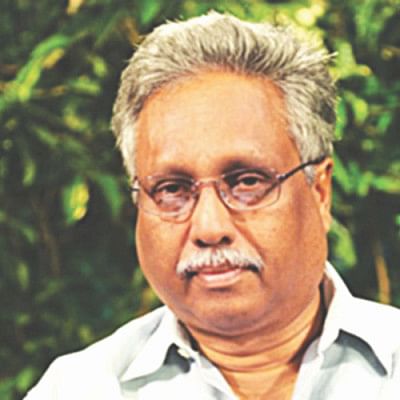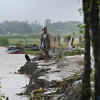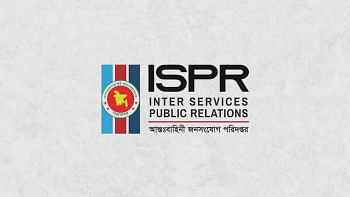“Reuse, reserve and recycle water to increase efficiency”

What is the current state of rivers in Bangladesh?
There are hundreds of rivers in the northern and central part of the country which have been allowed to be silted up. At present, river encroachment and siltation have emerged as big problems across the country. Additionally, excessive river water is being pumped for the purpose of irrigation. Moreover, the rivers in the southern part are facing an issue of salinity due to the impact of climate change and sea level rise.
The first and foremost thing we can do is restore the river to its original form through the process of desilting and dredging. Instead of dredging, we can use manual desilting process for small rivers. Large rivers may require mechanical dredging. We need to establish a modus operandi to restore rivers back to their original form.
Since cities are becoming more urbanised, what impact is it having on the efficient use of water?
In most of the towns, groundwater is used for water supply and sanitation. However, surface water should be used for water supply and sanitation instead of groundwater. Establishing area-based local water treatment plants can be a good solution. Furthermore, if we develop a well-designed sewerage system in the urban areas, it would be possible to recycle the water for further use.
Slums are very congested and are always in need of water supply. At present, the price of water is pretty much the same in both residential and slum areas. In fact, the amount of water spent by a household in residential areas to wash cars can possibly support 10 families in a slum. So, the price of water should be maintained based on affordability. A change in the pricing system will increase water efficiency and allow slum dwellers to have access to water at an affordable rate.
How can we ensure better access to water in water-scarce regions?
For the CHT, the small rivulets are sufficient to carry water throughout the year. But due to deforestation, the water-holding capacity in the ground has dwindled significantly. As a result, many of the rivulets have begun to run out of water, especially in the summer. Therefore, we should go for watershed management in order to increase the moisture-holding capacity of the soil. Additionally, the small fountains and waterfalls should be protected to ensure a constant supply of water.
In the drought-prone region, we need to build a mechanism for storing rainwater, particularly across the northern region. We should implement this mechanism for the southern region as well to avoid the issues associated with groundwater salinity.
How can water be used more efficiently in our everyday lives?
For industrial areas, Effluent Treatment Plants (ETPs) should be the preferable option because they are designed to purify industrial wastewater for its reuse.
If we change the frequency of irrigation and go for the Alternate Wetting and Drying (AWD) method, we can improve water efficiency and replace the usual system of maintaining continuous standing water in the crop fields.
The level of groundwater is going down due to excessive extraction. We can extract groundwater through two pump systems: suction mode pump and force mode pump. Suction mode pump limits the extraction up to 8 metres whereas with force mode pump, we can extract an unlimited amount of water. We should evaluate the recharge potential and then decide on pumping water. As of today, there is no regulation on the extraction of groundwater.
In relation to the different sources of water we have, what is the overall quality of water in Bangladesh?
From a theoretical point of view, there are three sources of water: surface water, groundwater and atmospheric water. Granted that atmospheric water or rainwater is of good quality, but the problem lies in the availability of this particular type of water. Unfortunately, we usually get heavy rainfall for a short span of time, namely, from June to October. But for the rest of the time, rainwater does not seem to be available as required.
The second source of water is surface water. Like rainfall, the distribution of surface water is highly seasonal. A huge amount of water flows into the river system from June to October, filling up water bodies like ponds, lakes, canals, etc. With the decrease in rainfall, the river dries up slowly and the water level reaches below a certain point.
We cannot depend on river water unless we conserve the monsoon flow and release it during the dry season. Unfortunately, we have no mechanism to store river water in the country apart from the Chattogram region. For this reason, we should go for the basin approach and strike agreements with our neighbouring country belonging to the upper riparian area.
As for water quality, the situation is not favourable at present. The rivers around cities like Dhaka are in poor condition because of the proliferation of industrial units. Due to the absence of an effective sewerage system, the industrial units dump waste into the river. Therefore, in the dry season, when freshwater supply is low, polluted water in the river reaches a high.
The third source of water is groundwater. The groundwater table goes up in the months of monsoon and goes down during the dry season. At present, the irrigation system of the country is largely dependent on groundwater. We use shallow tubewells where water level is restricted due to suction mode. But in different towns, the capacity to pump water reaches a saturation point, for which, we are now using force mode pumps or deep tubewells to extract groundwater.
What is the current state of rivers in Bangladesh? How can we ensure better river water management?
There are hundreds of rivers in the northern and central part of the country which have been allowed to be silted up. At present, river encroachment and siltation have emerged as big problems across the country. Additionally, excessive river water is being pumped with the purpose of irrigation. Moreover, the rivers in the southern part are facing an issue of salinity due to the impact of climate change and sea level rise.
The first and foremost thing we can do is restore the river to its original form through the process of desilting and dredging. Instead of dredging, we can use manual desilting process for small rivers. Large rivers may require mechanical dredging. Rivers are essentially khas land which is controlled by the deputy commissioner and the land ministry. Surprisingly, these groups have no mechanism for river management. We need to establish a modus operandi to restore rivers back to their original form.
As we know, groundwater level is going down whereas climate change is leading to an overflow of water. Please explain the link between these two facts.
Climate change is not responsible for the overflow of water. Climate change brings changes in the pattern of precipitation. It’s humans who are responsible for changing the condition of surface and river water. The level of groundwater is going down due to excessive extraction. It is possible to maintain the groundwater level and control the amount of water extraction through technology. We can extract groundwater through two pump systems: suction mode pump and force mode pump. Suction mode pump limits the extraction up to 8 metres whereas with force mode pump, we can extract an unlimited amount of water. However, we should evaluate the recharge potential and then decide on pumping water. As of today, there is no regulation on the extraction of groundwater.
Since cities are becoming more urbanised, what impact is it having on the efficient use of water? How can we ensure better access to water in slum areas?
In most of the towns, groundwater is used for water supply and sanitation. However, surface water should be used for water supply and sanitation instead of groundwater. Establishing area-based local water treatment plants can be a good solution. Furthermore, if we develop a well-designed sewerage system in the urban areas, it would be possible to recycle the water for further use.
Slums are very congested and are always in need of water supply. The global slogan is water should be made available at an affordable price for everyone, which is one of the targets under SDG 6. At present, the price of water is pretty much the same in both residential and slum areas. In fact, the amount of water spent by a household in residential areas to wash cars can possibly support 10 families in a slum. So, the price of water should be maintained based on affordability. A change in the pricing system will increase water efficiency and allow slum dwellers to have access to water at an affordable rate.
How can we ensure better access to water in saline-prone areas, CHT, the southern region, and drought-prone regions in the north?
The coastal areas of Bangladesh are highly affected by salinity. Using affordable water treatment plants and storing rainwater in canals and ponds can emerge as some good solutions. The project for desalination plant is suggested in some cases, but this is not an optimum choice as it is very expensive. The most preferable solution is to conserve rainwater in ponds and use it after filtration.
For the CHT, the small rivulets are sufficient to carry water throughout the year. But due to deforestation, the water-holding capacity in the ground has dwindled significantly. As a result, many of the rivulets have begun to run out of water, especially in the summer. Therefore, we should go for watershed management in order to increase the moisture-holding capacity of the soil. Additionally, the small fountains and waterfalls should be protected to ensure a constant supply of water.
In the drought-prone region, we need to build a mechanism for storing rainwater, particularly across the northern region. We should implement this mechanism for the southern region as well to avoid the issues associated with groundwater salinity. Instead of providing any generalised solution, we should seek location-specific solutions to respond to water-related issues.
How can water be used more efficiently in our everyday lives, in agricultural practices, in industrialisation, etc?
For industrial areas, Effluent Treatment Plants (ETPs) should be the preferable option because they are designed to purify industrial wastewater for its reuse. The existing agricultural practices yield the highest amount of waste. If we change the frequency of irrigation and go for the Alternate Wetting and Drying (AWD) method, we can improve water efficiency and replace the usual system of maintaining continuous standing water in the crop fields. As for domestic use, we should introduce small containers for drinking water instead of large ones to avoid wasting drinking water. The most effective solution is to learn the practice of reusing, reserving and recycling through which we can increase water efficiency.

 For all latest news, follow The Daily Star's Google News channel.
For all latest news, follow The Daily Star's Google News channel. 








Comments